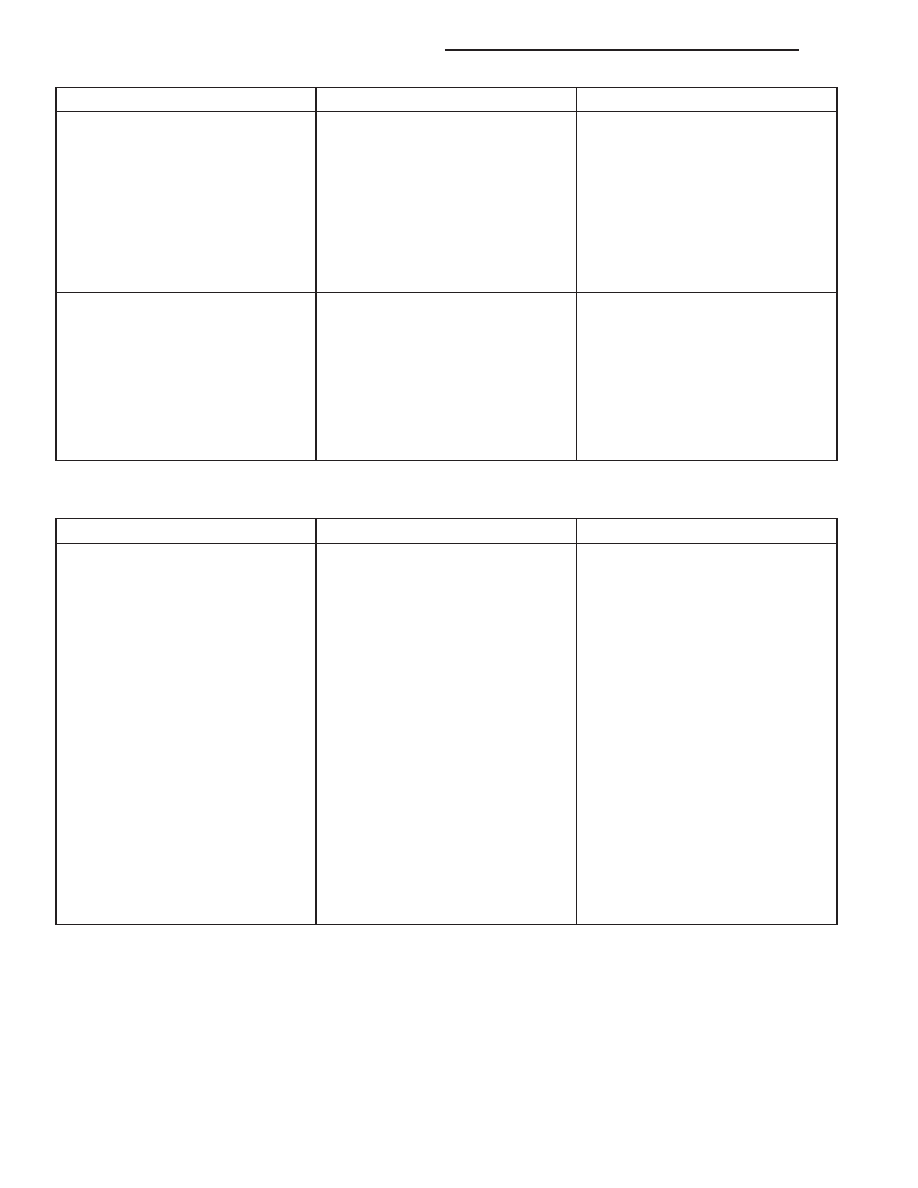Content .. 1173 1174 1175 1176 ..
Jeep Grand Cherokee WK. Manual - part 1175

CONDITION
POSSIBLE CAUSE
CORRECTION
ENGINE MISSES ON
ACCELERATION
1. Spark plugs dirty or incorrectly
gapped.
1. (Refer to 8 - ELECTRICAL/
IGNITION CONTROL/SPARK PLUG
- CLEANING).
2. Dirt in fuel system.
2. Clean fuel system.
3. Burned, warped or pitted valves.
3. Replcae as necessary.
4. Faulty coil.
4. (Refer to 8 - ELECTRICAL/
IGNITION CONTROL/IGNITION
COIL - REMOVAL).
ENGINE MISSES AT HIGH SPEED
1. Spark plugs dirty or incorrectly
gapped.
1. (Refer to 8 - ELECTRICAL/
IGNITION CONTROL/SPARK PLUG
- CLEANING).
2. Faulty coil.
2. (Refer to 8 - ELECTRICAL/
IGNITION CONTROL/IGNITION
COIL - REMOVAL).
3. Dirt or water in fuel system.
3. Clean system and replace fuel
filter.
DIAGNOSIS AND TESTING - ENGINE DIAGNOSIS - MECHANICAL
CONDITION
POSSIBLE CAUSES
CORRECTIONS
NOISY VALVES
1. High or low oil level in
crankcase.
1. (Refer to LUBRICATION &
MAINTENANCE -
SPECIFICATIONS)
2. Thin or diluted oil.
2. Change oil and filter.
3. Low oil pressure.
3. Check oil pump, if Ok, check rod
and main bearings for excessive
wear.
4. Dirt in lash adjusters.
4. Replace as necessary.
5. Worn rocker arms.
5. Replace as necessary.
6. Worn lash adjusters
6. Replace as necessary.
7. Worn valve guides.
7. (Refer to 9 - ENGINE/CYLINDER
HEAD/INTAKE/EXHAUST VALVES
& SEATS - STANDARD
PROCEDURE)
8. Excessive runout of valve seats
on valve faces.
8. (Refer to 9 - ENGINE/CYLINDER
HEAD/INTAKE/EXHAUST VALVES
& SEATS - STANDARD
PROCEDURE)
9 - 1296
ENGINE - 4.7L SERVICE INFORMATION
WK